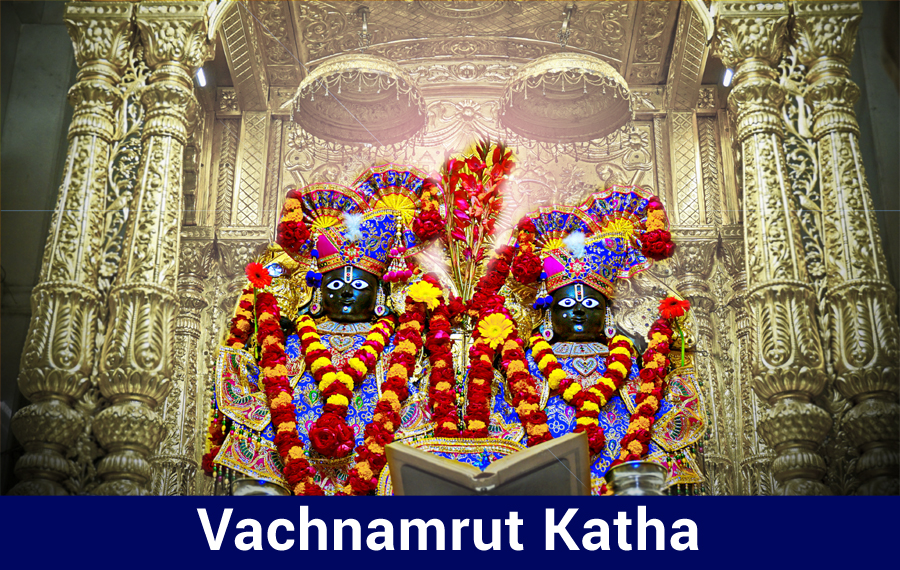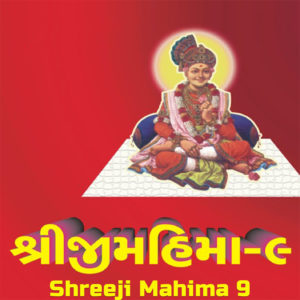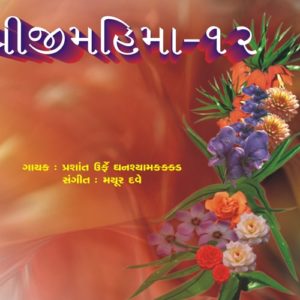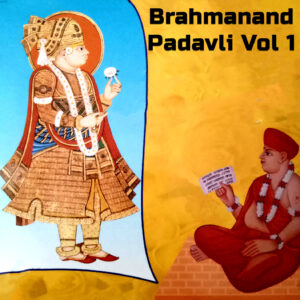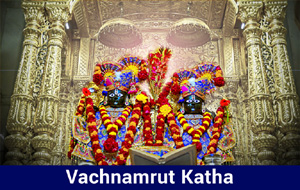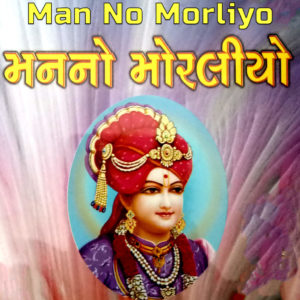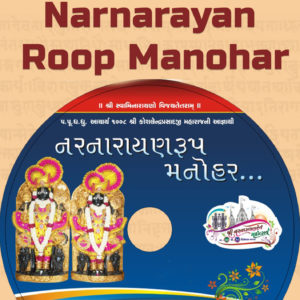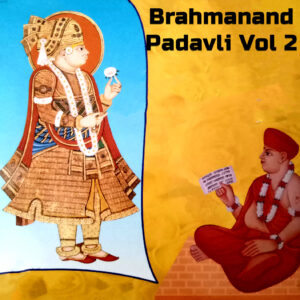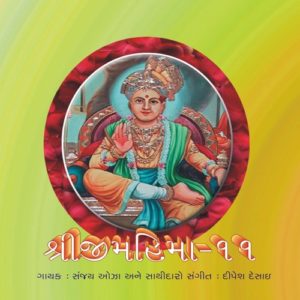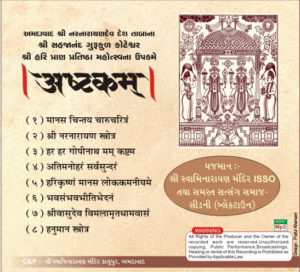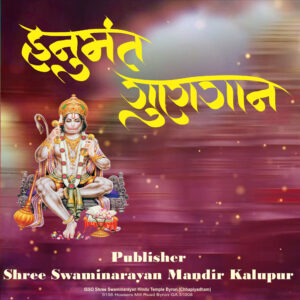How to concentrate on soul? When to meditate and when not to?
On the first day of the first fortnight of the month of Bhadrapada of Samvat 1877, Swami Shi Sahajanandji Maharaj was seated on a wooden cot in the Verandah near the hall facing north in the Durbar of Shri Jiva Khachar at Sarangpur. He was dressed in white clothes and the saints and the devotees from the various regions were assembled before him.
Then Nirvikaranand Swami asked, “which of the saintly attributes remain inherently constant in a saint and which of those attributes may or may not exist stably ?” In reply, Shriji Maharaj said, “Knowledge of one’s own self as atma, deep attachment to Swadharm and the decisive knowledge of God manifesting in human form, these three, fundamental attributes stay consantly in a Sadhu. He may or may not exihibit other attributes.
Then Muktanand Swami asked, “It is precisely established that Atma and body are separate and yet these two tend to assimilate and project physical conscious. What is^ the reason for such lapse in understanding ?” Shriji Maharaj said, “Once when it is clearly realised that the body and the Atma are separate, no lapse in such understanding would ever occur. Even if the thought may come, “I am the physical self ” yet the inherent knowledge of the separateness of both body and Atma sublates such obscurity. Again, the knowledge of the divinity of God in human manifestation would also never be sublated, once it is decisively established. Knowledge of Atma as separate of from the body when firmly established, is never sublated. It is through an obscurity in the mind that one feels the projection of Physical consciousness even when one transcends such impiric state and behaves in consonance with the state of Atma. In such an Atmabhav one feels that one as Atma is Brahm and enjoys the presence of Parabrahm Purushottam Bhagwan within one’s inner self, this divine knowledgw then remains ever immutable. Then after that, Swayamprakashanand Swami asked, “How one, in his initial stage, should think about the eternal truth that one is Atma ? ” Then Shriji Maharaj said, “When the Drishta, who is the Atma, introspectively examines the functioning of his Antahkaran, he becomes oblivious of the outer inluences and the seductive Panchvishayas; This consciousness awakens within him the knowledge by which he knows of Manas, Buddhi; Chitta and Ahankar.: In the same meditational mood, he should then witness the functioning of Antahkaran. And when Manas, Chitta. and Ahankar stop functioning and become quiet, then he should strive to meditate upon God.. But so long as thoughts persist in ones mind, one should not take to meditation but should examine the nature of such thoughts surging in the mind. To stop the insurgence of thoughts which project towards their particular sense- objects, one should introspectively think of the nature of such sense-objects and also of the Atma. After such introspective thinking, when the sense organs recede from their respective objecs and repose in the blissful Atma, they will stop being drawn towards their respective objects. But sudden and thoughtless withdrawal of the sense-organs, without of proper probe, would retain the suppressed attachment, which would surge out with renewed vigour when occasion arises. So far the Indriyas” remain attached to the Panchvishayas, one should avoid meditation. Only when the Indriyas are stabilised and are not drawn towards the Pahchvishayas, should one take to meditation upon image of God. In the process of meditation, one should remain careful that so long as the consciousness of the waking state persists, one should ignore all thoughts surging from one’s mind. And when one takes to intutional meditation, he should become oblivious of his gross body and the outer influences .The intuitional thought which awakens his inner consciousness keeps separate the Drishta and the Drishya.1 With such a thought- consciousness, one should ignore bodily insticts as perishable. No material cognisance, therefore, be taken of them. Again, the blissful instincts which eminate from the Atma should be fully enjoyed. It should be firmly realised that the body which undergoes evolutionary changes, viz., the vaious phases of childhood, youth, old age, health, sickness, death etc. in entirely separate from the Atma, who is uncuttable, unpierceable, eternal, immutable, full of consciousness, blissful and all powerful. One should try to remain conscious of these characteristics of the Atma so long as one is obstructed by persisting thoughts surging in one’s mind. This would revitalise his spiritual endeavour. Just as a king does not rest till he confronts his powerful enimies, and enjoys the luxuries of the kingdom only after all his enimies are completely destroyed, in like manner, a devotee so long as mundane thoughts persist in his mind must remain vigilant about these internal enemies of his and continue to sustain the feelings that he is the blissful Atma, related no more to the body. He should take to meditation only after the mundane thoughts subside.
Thus Ends Vachanamrit : Sarangpur – 12.
